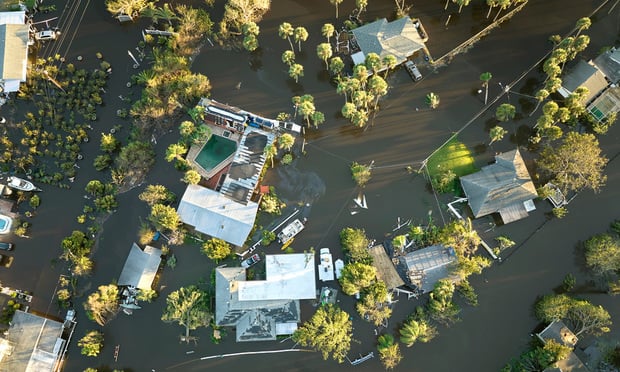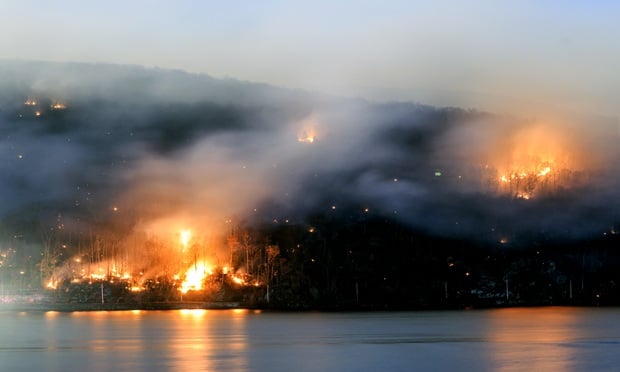Question. I am working on several large property claims from recent northern California firestorms. I am not clear on debris removal for our ISO HO-3 policies (HO 03 10 00) and whether debris removal as an additional coverage extends to removal of dead trees killed in the fire. The policy states that trees are covered under additional coverage (E) 3. when the loss is caused by a peril insured against, including fire. If the limit available for trees, shrubs and other plants is exhausted by payment of loss, is there an extension of another 5 percent for debris removal of these now dead trees? This insured has many acres of lost trees, and any available coverage is helpful. Some say that the additional 5 percent for debris removal extends only to Coverages A, B and C, and not to trees, shrubs and other plants. Can you help?
— California Subscriber
Answer. You are trying to combine two separate coverages. The debris removal does not apply to trees because the removal of trees of the insured is limited to the falling of the trees by windstorm, hail, weight of ice, snow or sleet, that damages a covered structure or blocks a driveway or handicapped ramp. There is no coverage for the debris removal of the trees.
Under the additional coverage for trees, shrubs and other plants, there is coverage for damage by fire, and an additional 5 percent of the limit that applies to the dwelling for all trees, shrubs, plants or lawns. So there is up to $500 of damage per tree, shrub or plant up to the 5 percent of the dwelling coverage. For example, the insured coverage A is $300,000. Five percent of that is $15,000, which is available for the replacement of trees. Although this coverage does not discuss debris removal, it would make sense that if the dead trees have to be removed before they can be replaced by new trees that would be included as part of the overall cost of replacement.
Question. I have a question on a HO-3 policy. Our insured had a tree fall on the roof punching a hole through it; the hole in the roof allowed rodents such as mice to enter the home through the hole. The tree damage to the roof would be covered under the HO-3 policy but there is a rodent exclusion under:
Section 1 Perils Insured Against, A. Coverage A-Dwelling & Coverage B-Other Structures #2 We Do Not Insure, However, For Loss: c.(6)-G Birds, Vermin, Rodents, or insects…
Because the rodents entered the house due to a covered loss, “hole in the roof due to the tree,” would the cost to exterminate the rodents and any resulting damage they may cause be covered as well?
— Utah Subscriber
Answer. There is no exception to the exclusion, so that if the loss occurs as a result of a covered loss then there is coverage. Also, you have the issue of how long the roof was left open; rodents don't generally move in immediately as soon as a hole is punctured in the roof, and rodents can get in through the smallest of openings; so they may not have been discovered until after the hole was created, but they could have been there beforehand. There is no coverage for the rodents in this situation.
Question. We provide Homeowner's coverage to our insured under AAIS Form 3 Ed 2.0. The Declarations Page indicates the deductible is $1,000 except for the perils of wind and hail; for these perils, the deductible is 2 percent of coverage A limit or $3,500. Our insured is reporting during a recent wind/rain event that a limb fell from an oak tree on the insured premises damaging the insured's roof and facia board. Our question is concerning which deductible would apply: the $1,000 or the 2 percent? It appears obvious the limb would not have fallen in the absence of the wind event, but we could not say this with 100 percent certainty. This home is located in the path Hurricane Katrina hit in 2005.
In the past, we have seen policies that exclude wind damage to fences, outdoor equipment and awnings, and in similar situations, under those policies it was argued the cause of loss was not the wind but falling objects.
We would like your thoughts.
— Louisiana Subscriber
Answer. “Couch on Insurance” 153:9 highlights in its discussion on windstorm that in some jurisdictions, a windstorm is any wind capable of damaging the insured property either by its own unaided function or by projecting some object against the property. Although the tree survived the Katrina winds, that was many years ago, and the tree is older. If the tree has been dead for six months, and the insured just hasn't had it removed, or if the tree is infested with an insect that damaged it to the point that a limb would spontaneously fall off, we'd say the limb fell and the regular deductible would apply.
If the tree is in good condition, however, we'd say the wind caused the tree limb to fall, and that the loss was due to wind. This hinges on the condition of the tree and the amount of wind. You might have a tree expert look at the tree to determine whether it's likely that the branch just fell or whether the fall was caused by wind. Then you can determine which deductible to apply.
Analysis brought to you by the experts at FC&S Online, the unquestioned authority on insurance coverage interpretation and analysis for the P&C industry. To find out more — or to have YOUR coverage question answered —visit www.nationalunderwriter.com/FCS.
Want to continue reading?
Become a Free PropertyCasualty360 Digital Reader
Your access to unlimited PropertyCasualty360 content isn’t changing.
Once you are an ALM digital member, you’ll receive:
- Breaking insurance news and analysis, on-site and via our newsletters and custom alerts
- Weekly Insurance Speak podcast featuring exclusive interviews with industry leaders
- Educational webcasts, white papers, and ebooks from industry thought leaders
- Critical converage of the employee benefits and financial advisory markets on our other ALM sites, BenefitsPRO and ThinkAdvisor
Already have an account? Sign In Now
© 2024 ALM Global, LLC, All Rights Reserved. Request academic re-use from www.copyright.com. All other uses, submit a request to [email protected]. For more information visit Asset & Logo Licensing.








